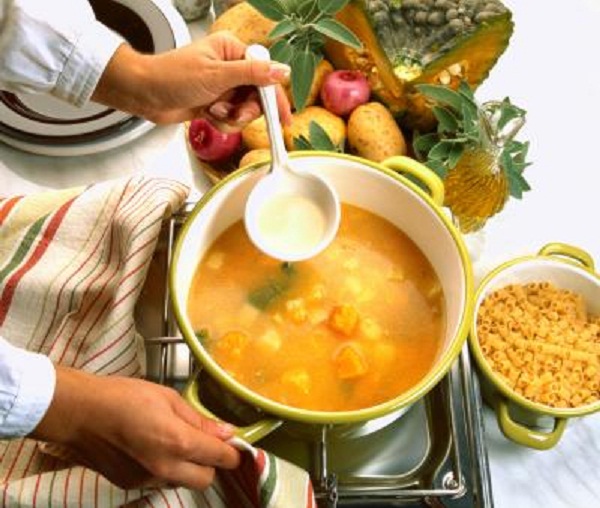
It is very important to eat healthy meals and this can be easily done even when you are on a budget. Many people believe that dieting and eating healthy meals is expensive. But this is a myth and one can take care of their diet regardless of their food budget. On the contrary, most of the low priced foods available are extremely unhealthy and will not look economical if a cost-quality analysis is conducted. Planning, bargaining, looking for cheap vendors, selecting low priced nutritious ingredients are all tips and tricks to cook healthy meals at home even when you are cost cutting. Moreover, such diet foods are rich in flavor and also easy to cook.
1. Use low priced ingredients
Look for food available at discounted rates and plan a weekly menu around these ingredients. The best foods are rich in fiber, high in water content, and low in fat. Also, high protein foods are quite healthful. Fresh fruits and vegetables are low priced and high in fiber, which makes them very filling and also low on calories. Pick vegetables and fruits like gourds, celery, kale, chard, pumpkin, leafy greens, carrots, leeks, apples, melons, oranges, grapes, egg plant, broccoli, etc.
2. Healthy carbohydrates
Carbohydrates have earned a bad repute, but the fact is that not all carbs are fattening. Pick fiber rich carbohydrates and ones with a low or medium glycemic index. These will keep you satiated for a longer time and prevent obesity. Some nourishing carbohydrates are pasta, brown rice, multi grain bread, oats, muesli, crackers, popcorn, etc. One should include whole grains like corn, barley, couscous, maize, rye, millet, quinoa, buckwheat, etc in their meals. Avoid eating refined, bleached, and processed grains as they are detrimental to health.
3. Processed foods
Most processed foods are unhealthy. Stay away from junk fare available at take-outs and diners. Although these might appear to be easy on the pocket, such meals are cooked with extremely low cost ingredients which are also unhealthful. Think value for money and invest your money in other nourishing ingredients. Ready to eat meals that can be cooked within minutes also contain a number of harmful additives and chemicals. Even chips, cookies, nuts and pretzels available in stores can add significantly to your calorie count. Most of the tinned and canned foods are high in trans-fats and sodium. Therefore, to stay in pink of health it is best to prepare meals at home using fresh and wholesome ingredients.
4. Be on the lookout for discounts
Many stores and supermarkets have schemes where they markdown prices of goods. Also, keep tab of the prices at the local farmers market and hunt for cheap deals in papers. Bulk purchases also help to bring down cost of goods. Buy seasonal fruits and vegetables as these are often cheaper. Do not waste any food. If you have leftovers save then for later. Just refrigerate them with a cling film or keep them in airtight containers with lids.
5. Alternate sources of protein
For cost saving, limit the amount of proteins you eat. One can look for vegetarian alternatives or trim down the portion size of meats. Also, this reduces calorie load of meals because meats are very calorie dense. Furthermore, buy only leaner cuts of meats that are low in fat. Eggs are cheap, high in protein and really appetizing when combined with veggies or sliced fruits. If you are worried about cholesterol intake, then simply remove the yolk and eat only egg whites. Include vegetarians proteins in diet like soy, tofu, cottage cheese, lentils, legumes, grams and all types of beans like black, lima, navy, fava, kidney, cowpeas, cannellini, chickpeas, etc which are also quite affordable.
6. Healthy recipes
Soups and broth with lots of vegetables and meats are really wholesome and affordable. One needs to add very little meat or just soup pieces to prepare them, which are usually quite inexpensive. Crockpot recipes can be cooked with lots of vegetables and lean meats in very little oil. Make salads using fiber rich vegetables like cucumbers, radish, watercress, tomatoes, onions, etc.




